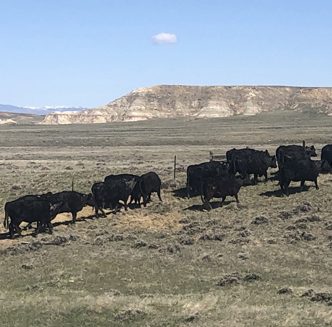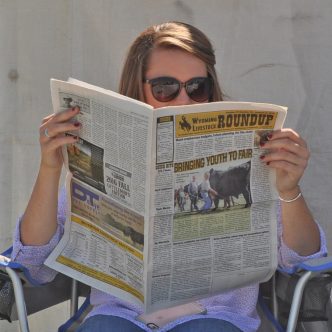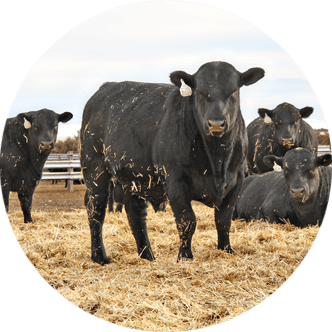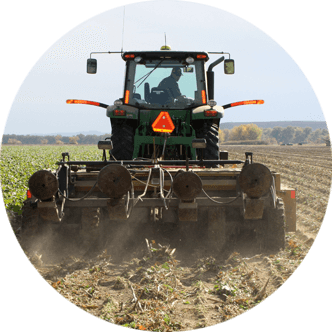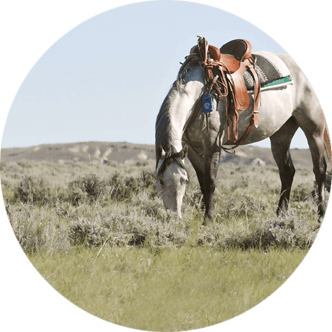Current forage situation and outlook outlined for the state of Wyoming
After a short hiatus, University of Wyoming (UW) Extension brought back WESTI Ag Days this year with a focus on alfalfa production. The one-day event was held on Feb. 12 at the Washakie Museum and Cultural Center in Worland and was free to the public.
Following a packed schedule of educational programming on everything from alfalfa variety selection and cutting timing to weevil management and blister beetle contamination, UW Department of Agricultural and Applied Economics Senior Research Scientist Brian Lee provided an overview and outlook on Wyoming’s current forage situation.
Weather and drought
To begin, Lee noted it is hard to discuss forage in any capacity without first mentioning weather and drought. He pointed out, although these conditions may differ across the state, they tend to affect everyone similarly in regards to hay prices and availability, since hay is a transportable commodity.
“Those who live here in the north-central part of the state are experiencing some different weather and moisture patterns than we are seeing down in southeast Wyoming, where we have had less than four inches of total precipitation since the end of July last year,” Lee mentioned. “It is definitely going to have a huge impact on grass availability.”
However, Lee noted the U.S. Drought Monitor shows a large portion of the state currently affected by drought, which has impacted range conditions, the number of animals producers are keeping and how much forage they need to feed.
“It is less than last year, where 51 percent of the state experienced drought conditions, compared to 21 percent this year. But, these persistent drought conditions are likely causing range conditions to decrease,” he stated. “And, this is going to have an impact on hay demand.”
Additionally, Lee cited the National Oceanic and Atmospheric Administration’s three-month outlook which shows below average temperatures for most of the state, except for areas in southern Wyoming, which may trend a little warmer than average and is also predicted to receive less precipitation than usual.
Hay stocks
With a milder winter and persistent drought conditions affecting rangelands, pasture and meadows, Lee said the next thing to consider is the state’s hay supply.
“In 2022, we had record low stocks across the nation, which Wyoming was involved,” he explained. “The year 2023 was actually pretty decent for production and it helped boost our stocks a little bit, but with relatively dry conditions around the state, stocks went down 23 percent in 2024.”
“This matters because storage impacts price,” he added. “It all comes down to supply and demand, in collaboration with range and pasture conditions.”
Price cycle
Additionally, Lee brought up the price cycle, which is currently at its lowest point.
“Right now, we are in somewhat of a stagnant state. There isn’t a lot of hay moving around,” he pointed out. “But, through this cycle, hay prices tend to increase as we move into spring.”
He noted this occurs as producers start purchasing extra hay to get them through to summer, in addition to spring calving, which may require more hay for pairs and gestating cows.
“Hay prices are going to increase going into summer, as seen in the seasonal index and also because of current range conditions,” explained Lee. “Prices are basically as low as they will go for the year right now, which may be an opportunity for those who need to go out and pick up a little bit extra. Now would be the time.”
Currently, Wyoming hay prices are sitting right on the national average at around $164 to $170 per ton.
Lee noted this number is relatively low compared to recent years due to a combination of higher stocks, rangeland conditions and low demand for hay as a result of the record-low national herd size, as well as a mild winter which hasn’t required producers to feed as much.
“I don’t think we will see hay prices move around much until the U.S. herd starts to rebuild,” Lee said. “I’ve seen some projections that this probably won’t happen until the end of the year.”
“Another big thing which could impact 2024-25 supply – and therefore, prices – is if we have an extremely wet first half of the summer which delays haying,” he added. “If first cuttings come off late, it can also have a huge impact on hay prices.”
Hannah Bugas is the managing editor of the Wyoming Livestock Roundup. Send comments on this article to roundup@wylr.net.

